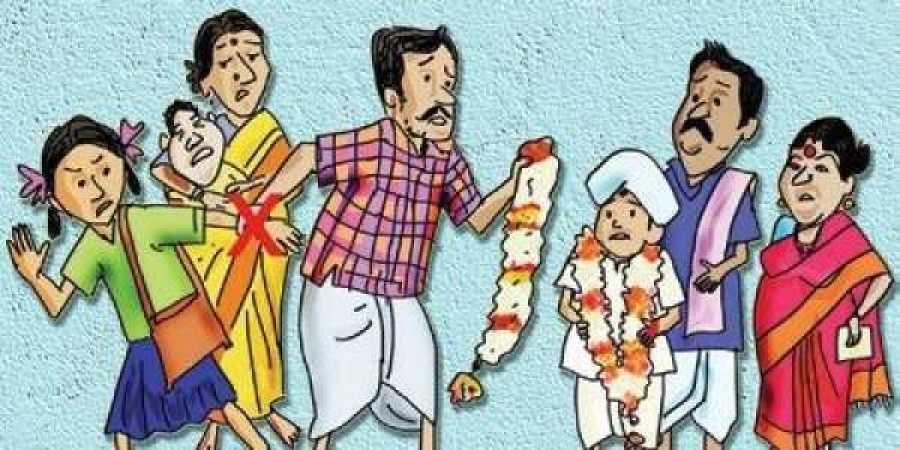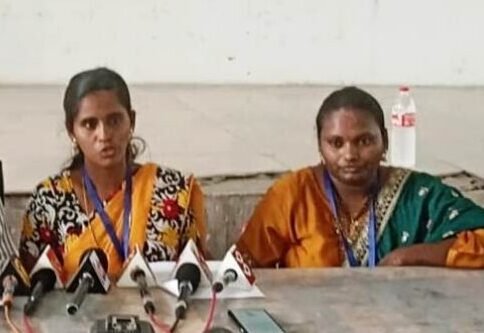November 1st to be announced as “National Child Marriage Prohibition Day”. Smt. Haseena – State Convener VIMUKTHI has stated that, we have submitted a representation to the Prime Minister of India and Minister for Women & Child Development, Union Government of India demanding to announce 1st November as National Child Marriage Prohibition Day. She said that, the Govt of India has formulated the Prohibition of Child Marriages Act in the year 2006 and enforced the same on 1st Nov 2007 (Vide Notification. No: S.O.1850 (E) Dated October 2007 See Gazette of India, Extraordinary, as per Part II Sec 3(ii)).
As per the 2011 Census, 9.65% of child marriages in India were from Andhra Pradesh (including Telangana) and the state was in the second place. As per the Census 2011, out of 4, 90, 11,171 total marriages, 1, 23, 68,440 (25.24%) were child marriages in Andhra Pradesh. Out of these child marriages, 13, 92,252 (6.25%) males and 1, 09, 76,188 (41.08%) females were below legal age of marriage. The analysis data shows that Guntur, Krishna, E. Godavari, Prakasam and West Godavari are the five districts where more than 27% of the marriages were Below the Legal Age for Marriage. Among the 13 districts, Guntur, Prakasam, Krishna, E Godavari, W. Godavari are the five districts where more than 45% of women were married Below the Legal Age of Marriage. As per the National Family Health Survey 4 (2015-16), 32.7% women between the age group 20-24 years were married before 18 years of age in Andhra Pradesh and 23.5% of men between the age group 25- 29 years were married before 21 years of age. 26.3% women in urban areas and 35.5% women in rural areas between the age group of 20-24 years were married before 18 years of age. 8.8% men in urban areas and 13.2% in rural areas between the age group of 25-29 were married before 21 years of age.
In accordance with the statistics by CHILDLINE 1098 there were 1700 child marriages during the year 2017 – 18 and 1900 in the year 2018 – 19 have been stopped. It could be understood that, there might be many a number of child marriages would have solemnized without the notice of CHILDLINE. The increased reporting of child marriages since four years reveals the intensity and failure in implementation of existing legislations that enforced to prohibit the child marriages. One more thing to be taken in to consideration is, the families which have been hindered from solemnization of child marriages might have perform at some other place and these statistics are unknown. Because, the CMPOs (Anganwadi Supervisors, CDPOs) who announced that they stopped a marriage are not taking proper follow up measures regarding the status of the issue.
The bitter issue is, right from the enforcement of Prohibition of Child Marriages Act, there are no even 0.5% of the cases (since united A.P.) till date under this Act. Because, still many a number of families are feeling girl children as an additional burden and to be reduced as soon as possible in the form of child marriages. Moreover, not only a normal citizen but also the duty bearers, people representatives including the police too are in the same attitude. Further, the CMPOs who have been constituted specifically to prohibit the child marriages are hesitating and sometimes rejecting to file cases under the Act.
The state of Andhra Pradesh occupied second place in the country with 18% of the reported cases amongst the states where there are highest prevalence of Child Marriages in India. Accordingly, India stood in 5th place in occurrence of Child Marriages globally. 45% of the girls are suffering with high risk pregnancy among those victims of child marriage. Most of these victims undergoing abortions and are facing various severe health challenges.
By keeping in view of the above rigorous intensity and rampant prevalence of Child Marriages, we request at least our Govt of Andhra Pradesh to take a proactive step to announce 1st November as a special day (“National Child Marriage Prohibition Day”) with regard to the issue of Child Marriage so as to create robust awareness among general public and systemic stakeholders including line departments and child protection mechanisms.


